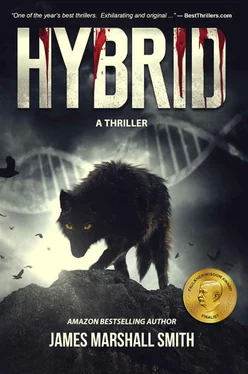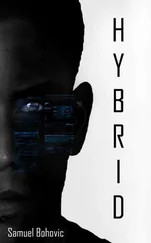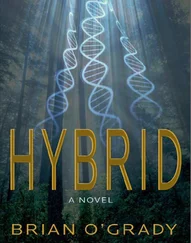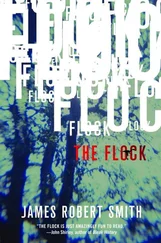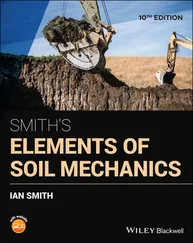“But the Loudermilks live and breathe among us. They’re our neighbors. That poor girl could be—” She slumped back in her chair and closed her eyes.
Harlan was right. It was the damn world that was wrong.
“Remember the missing Sweet Grass County girl?” he asked.
She vaguely recalled the strange case. Harlan said that it began four years ago. The missing girl’s face was posted everywhere in the tri-state region. In time, a local handy man reported to him that he caught a glimpse of the girl. Or at least someone who looked like her. It happened on the Loudermilk farm, right after he was hired to help the old man repair the roof of his barn.
At first, Harlan blew off the account and forgot about it. But an off-duty deputy from Madison County reported seeing a girl who resembled the one in the picture wandering near the highway. When he stopped to question her, she became suspicious and ran. He turned his truck around to follow as she disappeared across a field in the direction of the Loudermilk ranch. The deputy reported it to him, and the next day Harlan showed up at the Loudermilks with a search warrant that the Judge had signed.
He searched every square foot of the ranch for two hours. When he questioned old man Loudermilk, he claimed he knew nothing about the missing girl. The way the other family members responded to his questions, it was as if they had all rehearsed their stories before he arrived.
Except for one of the women.
He remembered asking if she ever saw anyone who looked like the girl in the picture he showed her. “She took one look at it and shouted back at me. Stop! Yelled at me like I was attacking her. Then she started doing the weirdest thing.”
He paused and shook his head, as if he couldn’t believe it himself. “She started pulling her hair out. Damnedest thing I ever saw.”
“In heaven’s name, what for?”
“Who the hell knows. Kept yanking her hair out one clump at a time.”
“What eventually happened?”
“Nothing. The missing girl was never found. But I’ll always remember the sight of that woman standing there, shaking and plucking her hair out by the roots.”
“I hope for the love of God, Harlan, you’ll look out for this other Loudermilk kid. Would hate to see her end up missing… or worse.”
When Molly returned to her truck, she sat with her head mashed against the steering wheel and her arms clutching her stomach. She jerked up when someone walked up to the open window.
Deputy Preston Cody leaned down and said he really wasn’t eavesdropping, but what with the thin walls in the old building and his boss’ deep voice—”
“Are you trying to tell me something, Preston?”
“Does the woman you’re looking for have long braided hair? Is she kind of on the skinny side?”
Molly nodded. “Yes. Both.”
“It might interest you to know, Mrs. Schoonover, that I believe I saw the young lady around noon. She was eating lunch down at the Bar and Grille.”
Molly switched on the ignition. “Thank you, Preston. Thank you very, very much. And you remind your mama that I told her you’d grow up to be a fine-looking man. Yes, siree. A fine looking man.”
She gunned the engine and raced away.
BantzMontgomery gawked at Dr. Matthew Wallace—rumored to be the country’s foremost wildlife detective—as he opened a thin burgundy briefcase. His reputation as an investigator of animal attacks around the country was just shy of legendary.
Dr. Wallace’s long bushy sideburns revealed a tinge of gray. He wore Wrangler jeans held up by a tattered leather belt with an oversized silver buckle with an engraving of an Aztec eagle. A veterinary pathologist, he served as Chief of Special Investigations with the National Fish and Wildlife Forensic Laboratory in Ashland, Oregon. For years the Lab had provided analytical services and crime scene investigations in support of wildlife-related crime. The lab’s forensic specialists identify species from animal parts and make every possible attempt to match illegal wildlife activity with a victim, suspect and crime scene. Their goal: conviction in a court of law.
Montgomery had learned that what Corey told him earlier was spot on—Park Superintendent Gilmer had called Dr. Wallace on the day the photographer’s body was found on the Madison. At that time the superintendent charged Wallace with flying to headquarters and going out into the field to determine what was going on. Not with just the photographer’s death, but with the livestock kills as well.
The meeting convened that morning at the Park’s Lamar Valley Conference Center, thirty miles from headquarters and near where the first wolves were released in Operation Wolfstock. Corey began the session by reminding everyone it was officially “Confidential Restricted” and would follow federal guidelines for classified discussions and reports.
Montgomery was stupefied. In all of his years at Yellowstone, he’d never been in a meeting like this. Classified ? Some kind of Top Secret government meeting about wildlife? He’d received earlier a two-page memo about the other visitor at the table, Professor Ian Hornsby. It was evidently the superintendent’s idea to bring in Hornsby and the professor’s job was to advise on wildlife behavior. Hornsby was on the faculty at Cambridge University in England, and wolves were his specialty. Wearing an open-neck dress shirt under a navy-blue blazer, his commanding frame and British accent gave him a highbrow air that announced expert . According to the memo Montgomery read, the professor had just finished a project at Colorado State in Fort Collins. He agreed to postpone his return to England to be there for the meeting. The memo made it clear that the wildlife world knew Ian Hornsby for his pioneering research on the wolf in Wood Buffalo National Park of northern Alaska.
At the far end of the table sat Greta McFarland, the deputy park superintendent and the only African American working on headquarters staff. A petite woman with penetrating eyes that advertised a studious demeanor, she was also the only one who didn’t wear a uniform. That was a habit that added to her aloofness, along with her preference for always taking her place at the far end of tables during meetings. She told the group that Superintendent Gilmer sent his apologies that he couldn’t be there to hear from them directly. Montgomery knew that to be nothing but bullshit.
After the introductions, Dr. Matthew Wallace tossed a stack of eight-by-ten color photos onto the conference room table and began his spiel. The top photo showed the scene of the Arizona photographer’s death with the body sprawled on the bank, half in the water and half on shore in a pool of blood. Wallace said that the Gallatin County Medical Examiner ruled that spine had been severed and that death was due to blood loss from the carotid artery. The fatal throat injury was the result of shredding and tearing… definitely not from a knife or sharp object.
The remaining photos in Dr. Wallace’s cache were close-ups of livestock kills from farms and ranches along the western border of the Park. All of the pictures showed abrasions and lacerations about the head and neck. For three, blunt force injuries had apparently occurred because of severe shaking and twisting following the initial bite. The slain animals had a common characteristic—throats ripped open with no evidence of any victim serving as a meal for the attacker. Strange, Montgomery thought.
With a felt-tip pen Dr. Wallace highlighted areas on the photos where hide or fur showed bite marks. “We can get a decent idea of the attacking animal’s identity from the shape of the bites,” he said. “The arc of front teeth for all members of the dog family is deeply curved. Just like the obvious imprint on the carcass in this picture.”
Читать дальше
